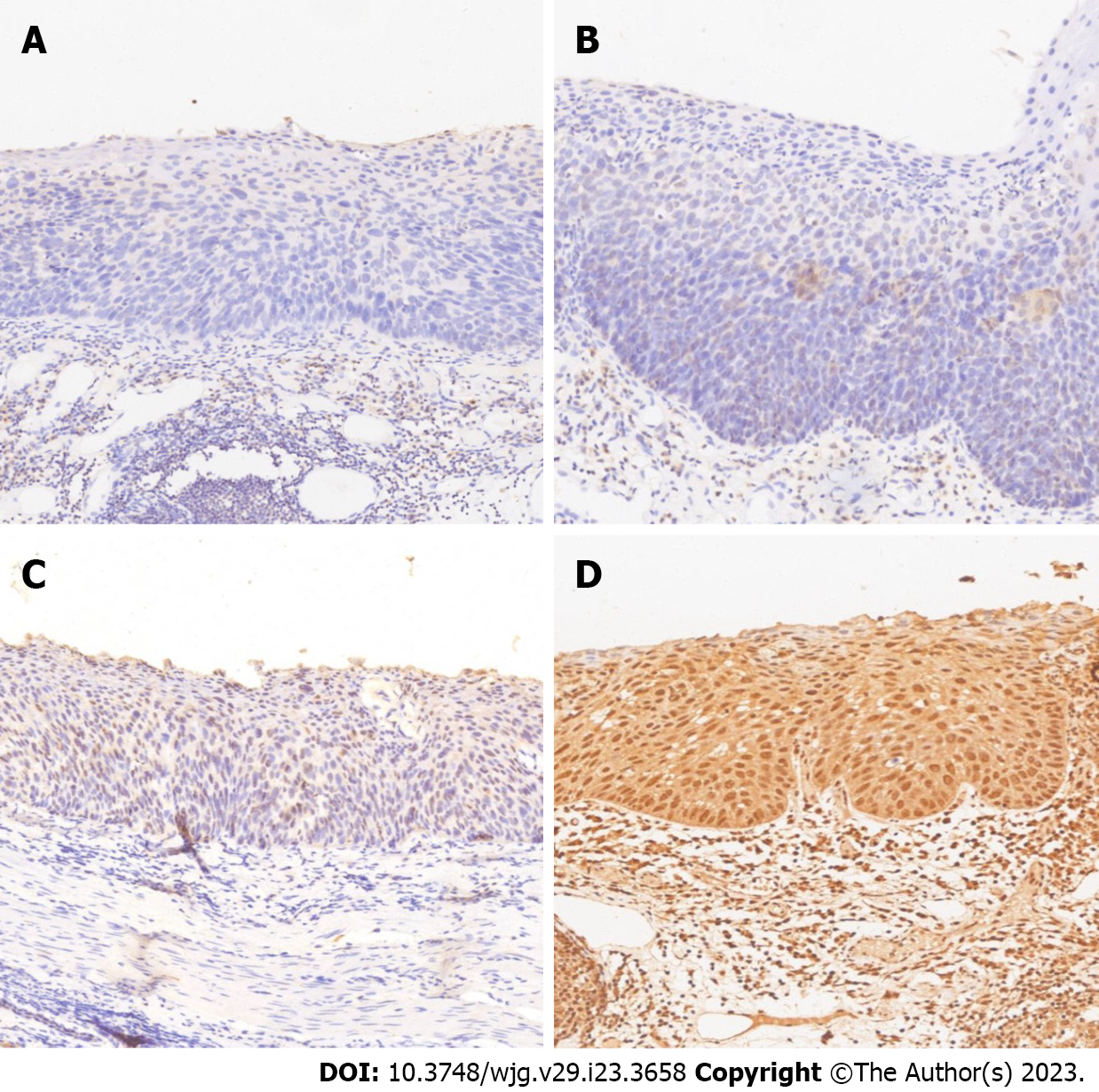Copyright
©The Author(s) 2023.
World J Gastroenterol. Jun 21, 2023; 29(23): 3658-3667
Published online Jun 21, 2023. doi: 10.3748/wjg.v29.i23.3658
Published online Jun 21, 2023. doi: 10.3748/wjg.v29.i23.3658
Figure 1 Study flow chart.
ESD: Endoscopic submucosal dissection; LIN: Low-grade intraepithelial neoplasia; SM2: Penetration of the submucosal layer > 200 μm from the muscularis mucosa; ESCN: Esophageal squamous cell neoplasia; ESCC: Esophageal squamous cell carcinoma; EP: Epithelium; SM1: Penetration of the submucosal layer < 200 μm or 200 μm from the muscularis mucosa; SGK3: Serum and glucocorticoid-induced protein kinase 3.
Figure 2 Serum and glucocorticoid-induced protein kinase 3 protein expression in superficial esophageal squamous cell neoplasia (magnification: × 400).
A: No serum and glucocorticoid-induced protein kinase 3 (SGK3) expression in esophageal squamous cell neoplasia (ESCN) samples (normal for SGK3 overexpression; 0); B: Weak SGK3 expression in ESCN samples (normal for SGK3 overexpression; 1+); C: Moderate SGK3 expression in ESCN samples (positive for SGK3 overexpression; 2+); D: Strong SGK3 expression in ESCN samples (positive for SGK3 overexpression; 3+).
Figure 3 Kaplan-Meier curves for overall survival and disease-free survival.
A: Overall survival; B: Disease-free survival.
- Citation: Xu N, Li LS, Li H, Zhang LH, Zhang N, Wang PJ, Cheng YX, Xiang JY, Linghu EQ, Chai NL. SGK3 overexpression correlates with a poor prognosis in endoscopically resected superficial esophageal squamous cell neoplasia: A long-term study. World J Gastroenterol 2023; 29(23): 3658-3667
- URL: https://www.wjgnet.com/1007-9327/full/v29/i23/3658.htm
- DOI: https://dx.doi.org/10.3748/wjg.v29.i23.3658











